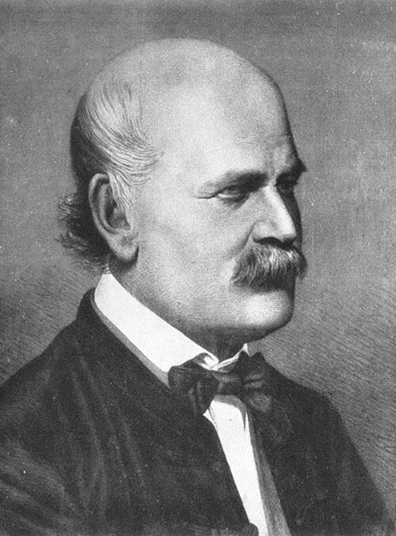In the fall of 1918, World War I at last ground to a halt. The meat grinder that was four years of intense trench warfare ceased its terrible movement and celebrations broke out around the world. Though a late comer to the war, some 5 million American servicemen, of which 3 million served overseas, began to be discharged so that they could return home and restart their civilian lives. Unfortunately, they brought back with them a little something called the Spanish Flu, a virulent as hell hitchhiker which quickly began spreading across the country, killing thousands. As can be imagined, a lot of people weren’t all that down with dying, so many municipalities shuttered businesses, schools, and public spaces. Mask wearing and social distancing became the norm, though not without resistance from some claiming such requirements infringed on civil liberties. Despite these extreme measures, some 675,000 Americans perished.
During the war, the United States had enjoyed an economic boom, supplying the various nations doing their best to cave in each other’s skulls. However, the end of the war, combined with measures to prevent the spread of the Spanish Flu, caused the economy to falter and stumble into a recession. Thousands of returning soldiers, eager to get back into the work force, found either no jobs available or shitty working conditions for even shittier pay. Less than pleased with this situation, many joined labor unions which organized mass strikes in support of each other throughout the country in the spring of 1919, many of which devolved into violent struggles between the unions, company goons and scabs, and police. These often violent mass strikes, along with random bombings by small groups of anarchists, convinced many that the country was descending into a communist revolution. Now this might sound ridiculous today, but one should probably remember that at the time full on communist revolutions were taking place in Russia, Germany, Spain, Italy, Finland, and Hungary, and most industrialized nations around the world were experiencing periods of communist inspired protests and riots. The fact that many American labor leaders at the time were also openly communist, to the point of calling for a widespread and violent labor revolution, probably didn’t help things that much either. As a result, a panic ensued which allowed various levels of government to launch campaigns against leftist groups and unions, including violent attacks against protesters and strikers and the unwarranted arrest, and even deportation, of many groups’ leaders.
Now prior to the war, big business in the U.S. relied heavily on the massive flow of immigrants from southern and eastern Europe to hold down labor costs and keep unions from gaining too much power. However, the start of the war dried up the flow of immigrants and the country’s entry into the war removed some 5 million people from the labor pool. Not really wanting to raise wages, many factories began hiring African-Americans, who prior to this period had mostly worked as share croppers in the South. It was rather easy considering racist Jim Crow policies kept African-Americans on the bottom of the economic ladder. Migrating to other parts of the country meant not only better wages, but also escaping restrictive laws and random lynchings, so it wasn’t that hard of a decision. Unfortunately, returning white soldiers, many of them immigrants or the children of immigrants, weren’t all that happy to find their jobs taken by people willing to work for less, never mind all the stupid racist views that were the norm at the time. This sentiment only intensified when strikes began and factory owners hired even more African-Americans to work as scabs. This resentment eventually boiled over into a series of race riots across the country, with white mobs indiscriminately attacking African-American communities, burning businesses and lynching residents. African-Americans, some who had served in the military during the war, not being all that keen with this turn of events, fought back. In many cases, the National Guard had to be called in to regain control. This was all of course blamed on communist agitators, you know, not because people dislike getting treated like shit.
Oh yeah, 1919 was also the year Prohibition began. So you know, just in case things weren’t crazy enough, you couldn’t even buy a damn drink. Anyways, just thought I might as well throw that in there. Back to the main narrative.
The total shitfest that was 1919 basically continued on throughout 1920 and 1921, with the country falling deeper into an economic depression which of course spurred further labor unrest, overzealous responses to labor unrest, and race riots. About the only bright point was the passage of the 19th amendment, giving women the right to vote in 1920. Peace was only largely restored by a new economic upswing which began in 1922. This upswing significantly weakened the labor movement, which had already been hurt by many in the general public coming to view them as being arm in arm with the violent communist revolutionaries in Europe. One of the last things they managed was to ally with racist nativist groups to convince Congress to pass laws severely restricting immigration. The labor movement would not recover its former political power until the Great Depression. As a result of immigration being curtailed, the migration of African-Americans out of the South continued for the next several decades. Though they faced discrimination and often times violence, this movement helped establish an African-American middle class and a cultural renaissance known as the New Negro Movement, both of which helped contribute directly to the Civil Rights Movement of the next generation.
Image: https://en.wikipedia.org/wiki/Omaha_race_riot_of_1919#/media/File:Omaha_courthouse_lynching.jpg



